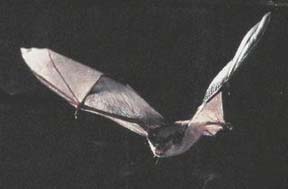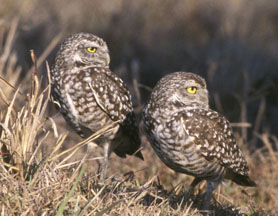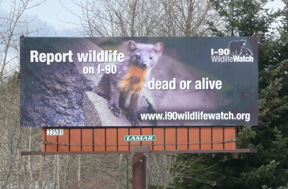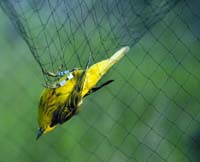 |
| Mobile bat detector |
A coalition of federal and state agencies is looking for wildlife biologists to lead and organize acoustic surveys of bats in all 50 states. (Actually, the program has at least some data from 24 states, but only New York is thoroughly covered, so more leaders are needed just about everywhere else.)
The coalition hopes to gather general population data on bats, particularly as these animals face two threats: white nose syndrome, and wind power development. Surveys specific to the sites of those threats don’t give needed information about bat population trends in general.
The survey protocol uses your real-time recording bat detector (such as those from Anabat or Binary Acoustic Technology) mounted to the roof of a car (with materials available cheaply from home improvement stores). The trickiest part may be planning the transect, which should be 20 to 30 miles long, and driven at very close to 20 mph. If it is a loop, it should be wide enough so that you are unlikely to encounter the same bat twice. The surveys should take place at sunset, on evenings that are over 50 degrees F, with low wind, and no rain.
Organizing a statewide survey is easy, say the organizers. New York covers the entire state with 80 volunteers and one coordinator. They cover 50 transects, two or three times a year.
Finding the citizen volunteers has been easy, but finding qualified wildlife biologists to lead state programs has been more difficult. Susi von Oettingen, of the US Fish and Wildlife Service, said in her presentation on the survey project at the Northeastern Fish and Wildlife Conference last month that state wildlife biologists are the ideal leaders.
Free training materials are available to leaders. For more information on the project, and how to get involved as a leader, visit the project’s Web site, which includes a video of a presentation of the project, plus a PowerPoint presentation.
Photo: Courtesy New York State Department of Environmental Conservation and the bat survey coalition
 The Montana Natural Heritage Program is collecting baseline information on the state’s bats that will be vital if the state is ever struck with white nose syndrome (WNS), an article in the Flathead Beacon reports.
The Montana Natural Heritage Program is collecting baseline information on the state’s bats that will be vital if the state is ever struck with white nose syndrome (WNS), an article in the Flathead Beacon reports.
 Back in 1995, the California Department of Fish and Game released a report on burrowing owls that described how to survey for them and steps that could be taken to mitigate loss of habitat. Yet, the numbers of burrowing owls in California have continued to decline.
Back in 1995, the California Department of Fish and Game released a report on burrowing owls that described how to survey for them and steps that could be taken to mitigate loss of habitat. Yet, the numbers of burrowing owls in California have continued to decline. Spring is here and a bunch of wildlife surveys are underway around the country.
Spring is here and a bunch of wildlife surveys are underway around the country.
